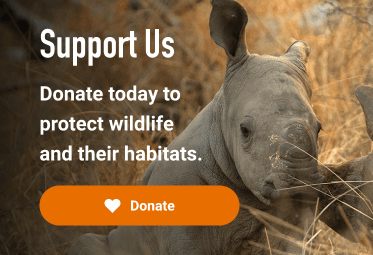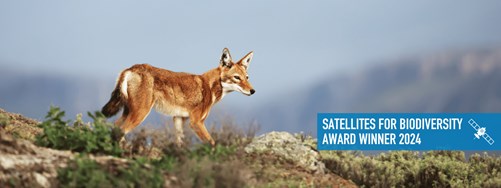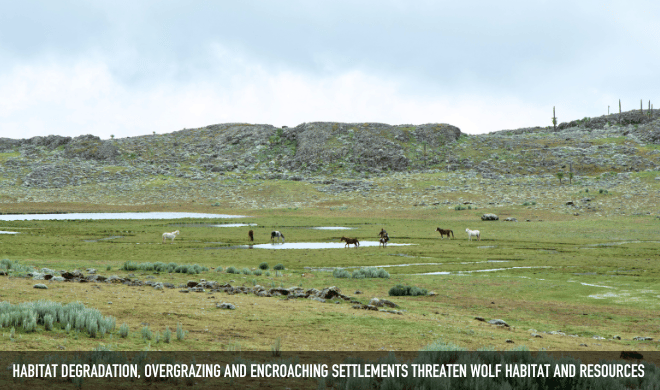Conserving critically endangered Ethiopian wolves
Partners: Chulalongkorn University, Ethiopian Biodiversity Institute and Airbus Foundation
Key Species: Ethiopian wolf, giant mole rat, Bale monkey, mountain nyala, Abyssinian ground hornbill, Ethiopian banana frog
2024 Award Winner
The Bale Mountains National Park stands as a beacon of biodiversity, unrivalled in its abundance of endemic species both regionally and globally.
At the core of this natural wonder lies the Afro-alpine realm, a sanctuary harbouring more than half of the world's Ethiopian wolf population, a species teetering on the edge of extinction, where just 366 individuals remain. Among the other treasures of this ecosystem are the Bale monkey, Ethiopian banana frog and the giant mole-rat, exclusive residents found nowhere else on our planet.
Yet, despite its ecological significance, the Bale Mountains face formidable challenges. Habitat degradation, overgrazing, encroaching settlements and the looming threat of disease transmission from domestic dogs, underscores the urgent need for conservation action.
Empowered by technology
Armed with high resolution satellite imagery donated by the Airbus Foundation, and funding and technical support from Connected Conservation Foundation, a team from Chulalongkorn University and the Ethiopian Biodiversity Institute is determined to turn the tide. Their new project aims to harness the power of Remote Sensing, Artificial Intelligence and Geographic Information Systems (GIS) to monitor and protect these Ethiopian wolf habitats. At its core lies the Web Valley, a vital sanctuary for these wolves, where the project aims to tackle the complex interplay between habitat dynamics and human activities.
Informing targeted conservation
Rigorous evaluation methods, including transect surveys and Object-Based Image Classification of land use, will help them unravel the intricate relationship between habitat pressures, giant mole rat (wolf prey) prevalence, livestock impacts and wolf distribution.
By understanding how these factors intersect, the project will inform targeted conservation efforts that strike at the root of the problem. From strategic exclusion zones for livestock to community-based initiatives promoting coexistence, to preserve the delicate balance of the Bale Mountains ecosystem.
A blueprint for change
Long-term, the team hopes that lessons learned here could be echoed across Ethiopia and beyond, offering hope for other endangered species facing similar threats, especially those with an overlapping home range such as the giant mole rat.






